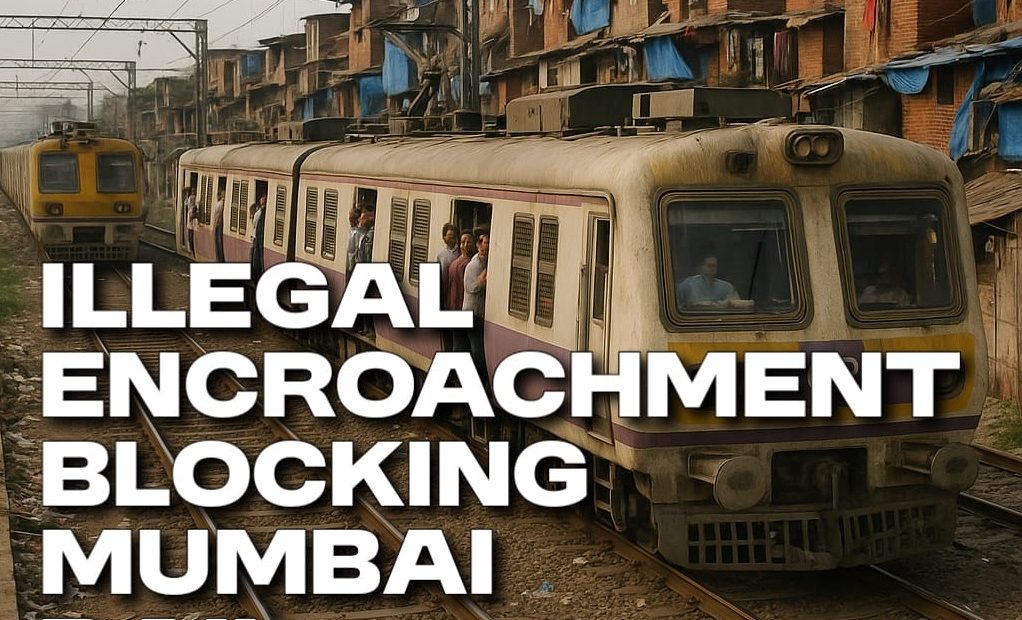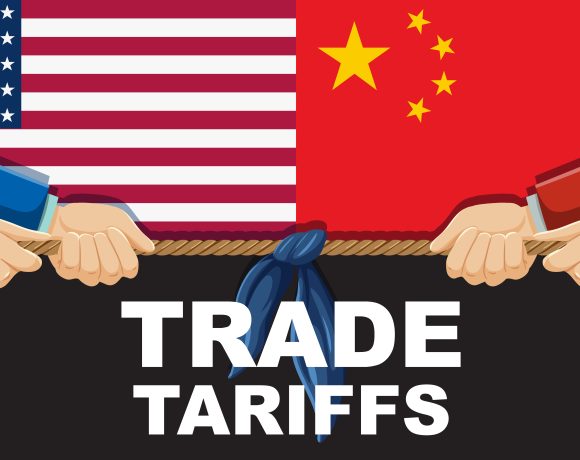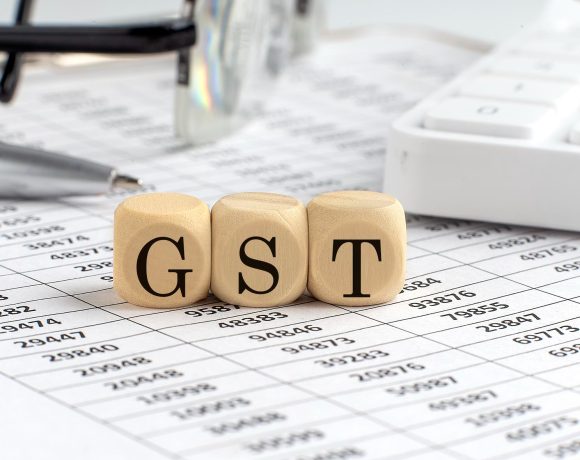
Illegal Encroachment Is the Track Blocker: Until the Railways Clears Land, Nothing Will Move in Mumbai
Every few months, the Indian Railways or the Maharashtra government announces some shiny new initiative for Mumbai’s overburdened local train network—AC coaches, automatic doors, swanky footover bridges, and digital ticketing kiosks. But for the average Mumbaikar clinging to the footboard of a jam-packed 8:42 AM Virar fast, these announcements are like putting scented candles in a burning building. The real emergency isn’t about airflow or announcements—it’s about land. Specifically, land that the Railways no longer has control over because it has been illegally occupied. Until this encroachment is removed and new tracks, platforms, and yards are created, nothing meaningful will move in Mumbai’s suburban system.
Mumbai’s Rail Congestion Is a Land Problem, Not Just a Passenger Problem
The sheer density of Mumbai’s suburban traffic is not just about a rising population or growing urban sprawl. It’s about physical constraints. The three lifelines of Mumbai—Central, Western, and Harbour—are operating at nearly full capacity. Some sections run over 1,800 train services daily on tracks meant for half that volume. You can’t increase frequency if you don’t have more lines. You can’t add new services if there’s no space for sidings, stabling lines, or turnarounds. You can’t extend platforms if the land beyond them is occupied by huts, shops, or godowns. This is not a technological bottleneck—it’s a territorial one.
The Scale of Illegal Encroachment: What We’re Not Talking About
Over 24,000 illegal structures—ranging from jhopdis and scrap yards to permanent shops—sit on Railway land in Mumbai. Encroachments near stations like Kurla, Bhayandar, Dadar East, and Diva are so entrenched that they now have political representatives and voter IDs. Projects like the 5th and 6th lines between Borivali and Virar or the stalling of the Panvel–Karjat corridor tell the same story—Railways have the blueprints, but not the land. The expansion that Mumbai desperately needs is fenced in by a wall of encroachment, both physical and political.
Why Encroachments Remain Untouched: Courts, Cowardice, and Collusion
It’s not as if the Railways has never tried to clear encroachments. But once notices are issued, petitions are filed, courts intervene, and the clearance drive dies quietly. Courts demand rehabilitation plans before demolitions, but those depend on the state government’s SRA schemes—leading to an endless loop of buck-passing. Meanwhile, political parties across the spectrum hesitate to upset their slum vote banks. What you get is a carefully calibrated paralysis: enough talk to signal intent, but never enough action to create change. At the ground level, enforcement teams lack the legal muscle and the police protection needed for sustained drives, especially in politically volatile zones.
Cosmetic Fixes Are Not Capacity Solutions
Let’s be clear: AC locals might be a great PR story, but they carry fewer passengers than regular rakes. Automatic doors might reduce accidents, but they also slow down boarding—already a nightmare in a city where trains stop for under 30 seconds. Footover bridges may ease platform transfer but do nothing for platform length or train volume. These are at best accessories. You can’t fit more people into a box that’s already full, no matter how much air-conditioning or LED lighting you install. Unless more space is carved out—through land clearance and track addition—these cosmetic touches will remain irrelevant to the core crisis.
The Cost of Inaction
The price of this institutional paralysis is measured in lives and livelihoods. The recent Mumbra tragedy, where four people died falling off a crowded local due to footboard collisions, is not an anomaly. It’s routine carnage. The overcrowding also drains productivity—millions lose precious hours in transit, contributing to a chronic time-tax on the city’s economy. Projects under MUTP-III and IIIA worth thousands of crores are delayed or underutilized simply because the Railways can’t clear a few hundred meters of encroached land. Mumbai is being robbed of the future it already paid for.
What Needs to Be Done Now
This is not a challenge of capability—it’s a challenge of will. The state and central governments need to coordinate a comprehensive land recovery plan for Mumbai Railways. This must involve updated land mapping, legal fast-tracking of eviction approvals, and a tightly managed relocation policy that doesn’t stretch into decades of litigation. Fencing of cleared land must be immediate and monitored. Encroachment cannot be allowed to return with the next election cycle. The Railway Protection Force must be empowered, both legally and operationally, to prevent reoccupation.
Conclusion: The Real Reform Begins with Reclaiming Land
The government can launch all the digital ticketing apps, pink coaches, and designer stations it wants—but as long as illegal encroachments remain untouched, Mumbai’s local trains will remain a dangerous, dysfunctional gamble. The true reform is not on the surface but beneath it—on the land that was meant for future tracks, wider platforms, and stabling yards. Until that land is reclaimed and protected, Mumbai’s railway upgrades will be like trying to inflate a balloon in a bottle. It will look busy. It might even sound progressive. But it won’t go anywhere.


















